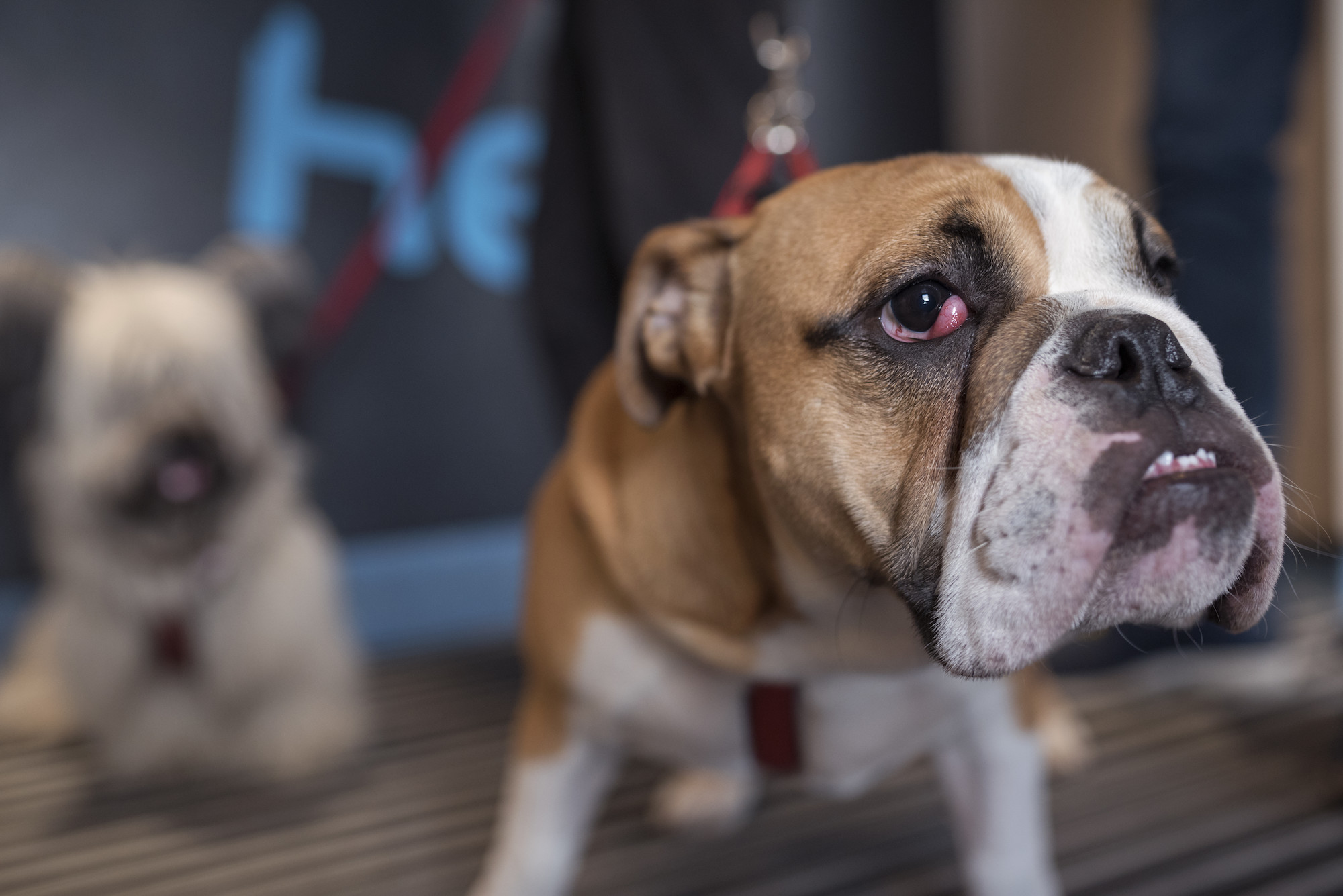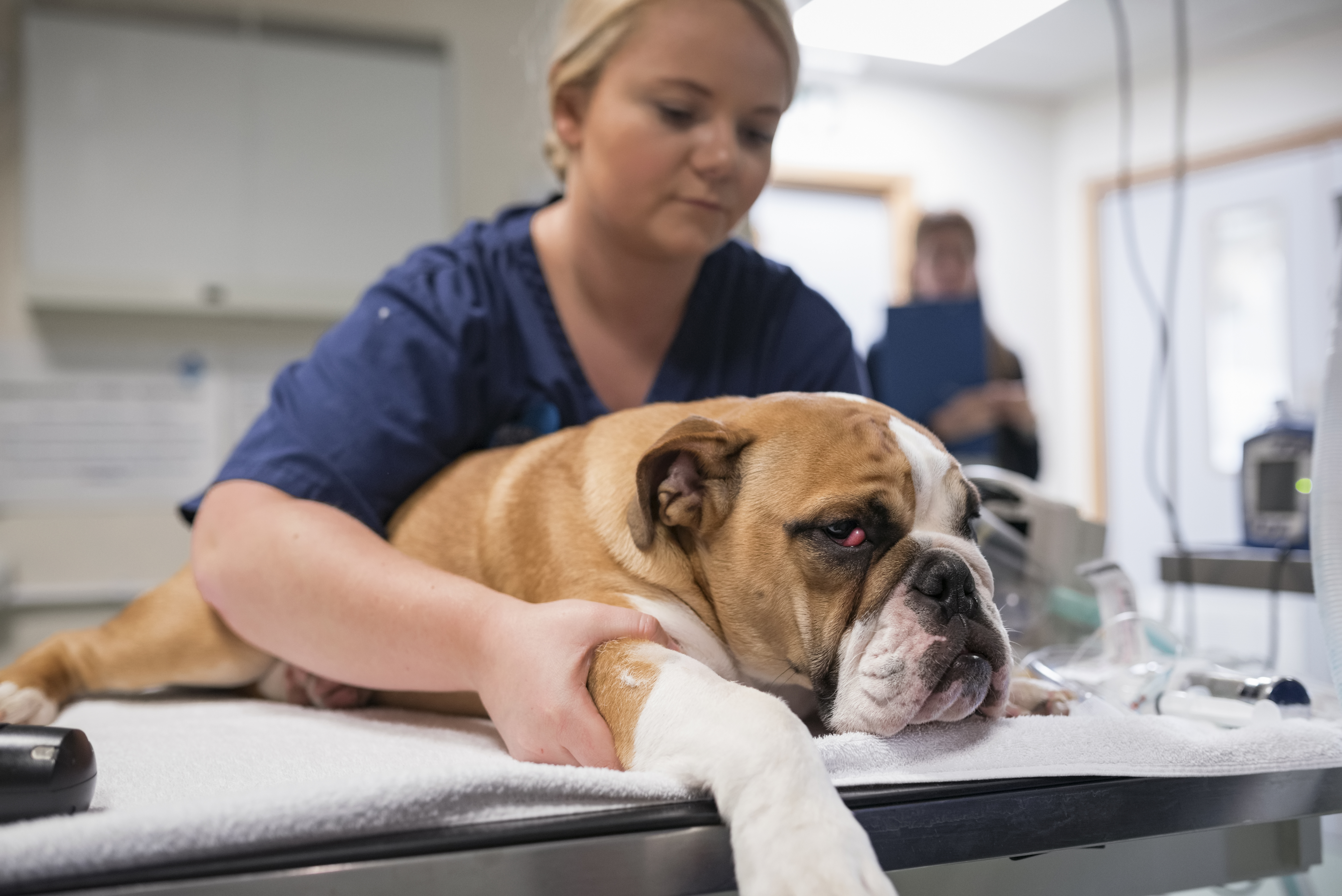
Cherry eye in dogs
- Cherry eye is a common condition inherited in certain breeds of dogs
- In rare cases cats can also be affected by cherry eye
- The problem is caused when a gland in a pet’s third eyelid becomes swollen
- It creates a pink mass which covers part of the eye
- Early treatment is crucial as the condition can cause long term complications
What is cherry eye?
Cherry eye is a common condition inherited in certain breeds of dogs and, in rare cases, it can arise in cats. Unlike humans, they have three eyelids rather than two – and the problem is caused when the tear gland in the third eyelid becomes swollen and red, covering part of the eye. There’s no real evidence to suggest that it is uncomfortable, but the glands are crucial to maintaining optimum eye health, so it’s important that problems are treated promptly.
What are the symptoms of cherry eye?
When the gland in the third eyelid swells, it creates a small pink bulge which covers part of the eye. It protrudes from the corner of the eye nearest the nose.
Is cherry eye painful for my dog or cat?
Although unsightly, cherry eye doesn’t normally cause any discomfort to dogs or cats unless it is left untreated and complications occur.
What causes cherry eye and is my pet likely to get it?
Dogs who suffer from cherry eye normally have a genetic predisposition to the condition, and symptoms will normally arise in pets under the age of two. Breeds in which cherry eye is commonly found are English bulldogs, lhasa apsos, cavalier king charles spaniels, shih tzus, West Highland white terriers, pugs, bloodhounds and Boston terriers. Cats who suffer from the condition will also normally show symptoms under the age of two.
There have also been instances where owners have reported cherry eye developing suddenly when their pet becomes overexcited, shocked or scared.
How is cherry eye treated?
It’s sometimes said that cherry eye can be resolved by carefully massaging the affected eye to reposition the prolapsed gland. Occasionally, the gland will correct itself on its own or will do so after a course of medication and steroids.
But surgery is normally required. Historically, vets removed the prolapsed gland but this has since been found to result in dry eye and even blindness. The only way to resolve the condition is to surgically replace the affected gland back in its proper location.
There are several different techniques but, unfortunately, this isn’t always a long term solution and recurrence is common.
Dogs which have the condition should not be bred.
Can cherry eye reoccur?
A high number of dogs successfully treated for cherry eye see the condition return. If this happens, the same procedures and treatment can be repeated.






